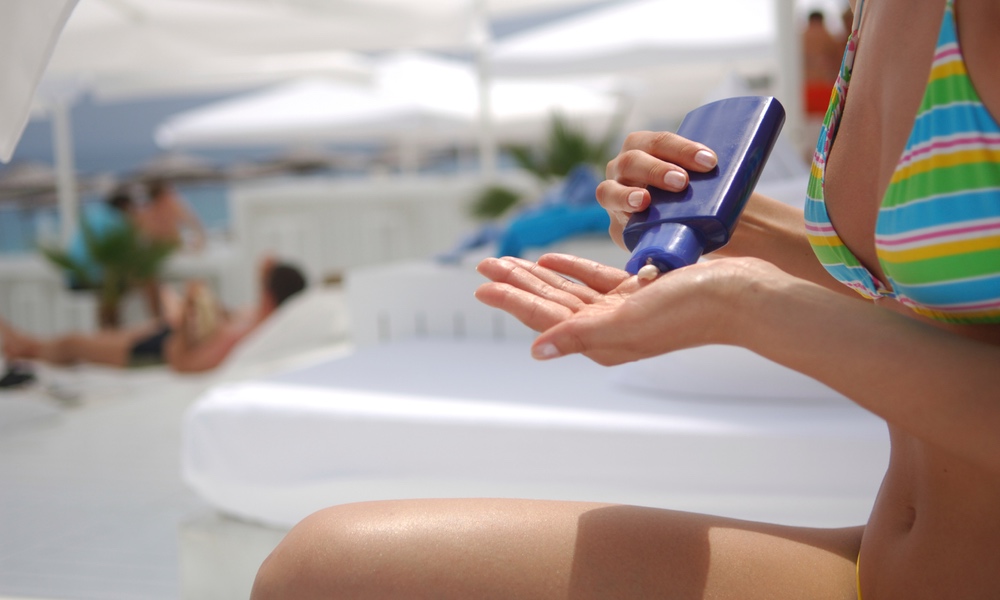Sunscreen can help protect your skin against harmful ultraviolet (UV) rays this summer, but only if it is applied correctly and often enough. The mistakes people make when they apply sunscreen can compromise the protective effects of sunscreen and can increase the risk of skin cancer.
“To get the best possible sun protection, it is important to wear protective clothing and apply sunscreen to all exposed skin, not just your face and arms,” Ingrid Polcari, corresponding author of a study identifying the mistakes people make when using sunscreen, said in a statement.
Researchers set up free sunscreen dispensers at the Minnesota State Fair and observed over 2100 people using them over a 93-hour period. Only a third of those who used the dispensers applied sunscreen to all of their sun-exposed skin. The other two-thirds applied it to their arms (51 percent), face (42 percent), chest (six percent) and legs (3.6 percent). The average adult should generally apply about one ounce of sunscreen to all exposed skin, Polcari said.It is a common misconception that clouds prevent sunburn. However, up to 80 percent of harmful UV rays can penetrate clouds and damage the skin.
Sunscreen use was related to the weather, with use of the free dispensers decreasing significantly on cloudy days. Polcari told TheDoctor in an email. It is a common misconception that clouds prevent sunburn. However, up to 80 percent of harmful UV rays can penetrate clouds and damage the skin. “We need to do a better job of reminding the public that sun protection is important in all kinds of weather,” said Polcari, an assistant professor of pediatric dermatology at the University of Minnesota.
Women used the sunscreen dispensers more than men. Previous studies have found women are more likely than men to wear sunscreen, but it’s important that men use sunscreen, too.
“Men over 50 have a higher risk than the rest of the population of developing melanoma, the deadliest form of skin cancer, and UV exposure is the most preventable skin cancer risk factor,” said Darrell Rigel, a professor of dermatology at New York University, who was not involved in the current study. “[S]o it’s important for men of all ages to protect themselves from the sun’s harmful rays by applying sunscreen, wearing protective clothing, and seeking shade.”If you have sensitive skin, look for a sunscreen that contains the active ingredients zinc oxide or titanium dioxide.
If you have sensitive skin, look for a sunscreen that contains the active ingredients zinc oxide or titanium dioxide. You should avoid ingredients like fragrances, oils or PABA — para-aminobenzoic acid.
Apply a broad-spectrum sunscreen with a Sun Protection Factor (SPF) of 30 or higher to exposed skin about 15 to 20 minutes before going outside. Sunscreen should be reapplied every two hours, or more often if you are swimming or sweating.
Skin cancers can also form on the lips, Polcari warns, so don’t forget to apply a lip balm with SPF.
The study is published online recently in the Journal of the American Academy of Dermatology.





